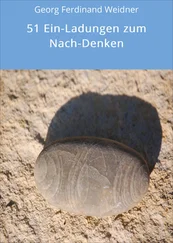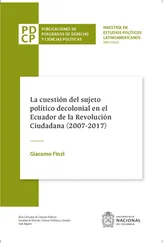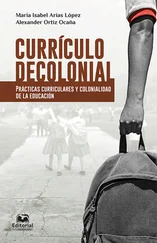Finally, the third act founding colonial inhabitation is the massacre of Amerindians and violence inflicted upon Amerindian women . These massacres were the foundation of colonial inhabitation and were recounted at length by Bartolomé de Las Casas. 16Concerning the French experience in the Caribbean, it was on the ashes of the massacred Caribs that the first French colony in Saint-Christophe was established in 1625 by the first French colonists, under the aegis of d’Esnambuc. The island of Saint-Christophe was occupied by the Caribs, the English, and the French. Pretending that they were avoiding an ambush by the Caribs, who would have tried to drive them out, the English and French, by mutual agreement, decided to massacre all the Caribs of the island and those who would come to it, as Father Du Tertre recounts: “… they stabbed almost all of them in their beds, on the same night, saving only a few of their most beautiful women in order to abuse them and make them their slaves ; 100 or 120 of them were killed.” 17
This account shows the entanglement of the ideology of colonization with that of male domination, which transcends ethnic boundaries. Colonial inhabitation is explicitly gendered. It is about slaughtering men and raping women, pitting the “savages” against the inhabitants. Colonial inhabitation was established upon the massacre of Amerindians and the possession of the bodies of Amerindian women, a true enactment of the principle of othercide.
Forms of colonial inhabitation: private property, plantations, and slavery
In addition to its principles and its foundations, colonial inhabitation is especially conspicuous in its forms, in its habitat . Here, the meaning of the expression “render these islands inhabited” is to be taken in the sense of manufacturing. Colonial inhabitation is the engineering of humans and ecosystems, and it has three main characteristics. The first feature of colonial inhabitation was the institution of private ownership of the land. Plots of land were allocated to individuals – men – so that they would cultivate them, thereby allowing for export and trade with France. The individual titles of ownership participate fully in the collective enterprise of exploitation by colonial inhabitation. Whether the titles were distributed free of charge, as in the early days of the French occupation of Saint-Christophe, but also in Martinique, or if they were purchased, their validity was conditional upon the clearing and exploitation of the land. 18Several orders made by the Council of Martinique and the king from 1665 to 1743 required owners to clear and cultivate the land. 19With the introduction of private landownership came the parcelling out of land, similar to the “world of fields and fences” established in New England by European colonists. 20Once a common good among the Amerindians, the Caribbean islands were parcelled out, favoring both the settling of colonists and the collective exploitation of the islands by a number of individuals who intensively cultivated their parcels of land until the soil was exhausted before then moving onto another plot. This focus upon parcels prevented a more complete vision of the effects of this intensive cultivation, seen in the deforestation of the plains and mountains of the colony of Santo Domingo. 21
Colonial inhabitation’s second main feature was the establishment of the plantation as the primordial form of occupation: an ensemble comprising the cultivated field, the workshops and factory, the master’s house, and the shacks of the enslaved. Whether for cotton, indigo, tobacco, or sugar cane, the plantation was the main form of land occupation. While the principle remains the same, its most characteristic form in the French Caribbean from the second half of the seventeenth century was the sugar-cane plantation. As the parcels of land became larger and larger, land pressures increased more and more, occupying all of the plains of the islands. This arrangement of plantations on the plains of the islands, laid out as early as the seventeenth century, is still visible today. In Martinique, one simply needs to take the road from Fort-de-France to Marin, or from Vauclin to Trinité on the east coast, to realize that all the plains – apart from the villages – are covered with cane fields or banana plantations. The hillsides, however, are home to various households. The privatization of the land and the introduction of plantations was not only a way of occupying these arable lands. The establishment of these plantations as a principle for inhabiting the islands also structured how the rest of the territory would be occupied. The location of ports, the creation of roads and railways, and the construction of parishes were conceived within the framework of this colonial inhabitation. The religious, political, and administrative organization of the territory was designed to turn these islands into lands of intensive monocultures, whose products would be exclusively exported to France.
Finally, the third fundamental feature of this colonial inhabiting was the mass exploitation of human beings via a hierarchical organization of production that featured a master and servants. Regardless of their origins or skin color, this exploitation of human beings was a condition of colonial inhabiting. We can see this intertwining of colonial inhabitation and human exploitation in the official vocabulary of French royal and colonial authorities, where the word “inhabitant” is confused with “master.” One example can be seen in the edict of the intendant of Martinique of January 7th, 1734, which “forbids the masters to have their coffee sold by their Negroes,” and where article 1 specifies that “the inhabitants who have their coffee transported by their slaves, outside of their residence [ habitation ], give them a note signed by them ….” 22 The inhabitant is the master, the master is the inhabitant . The enslaved are the Negroes, those who do not inhabit.
As an inextricable condition of colonial inhabitation, the exploitation of human beings gave rise to various forms of colonial servitude and slavery. Here the epithet “colonial” is not a historical indicator but reflects the fact that this domination of human beings is carried out in order to continue colonial inhabitation. This was first the case with the enslavement of the Amerindians, which was particularly intense in the Spanish experience in Santo Domingo, Puerto Rico, and Jamaica. In the French experience, this colonial slavery was, in the early days, marked by recourse to White indentured servants. These people were enlisted to work for thirty-six months and received a salary that was paid at the end of this period. The domination of these people, whose social conditions did not allow them to pay for the crossing, had already begun upon their departure from the French ports. In addition to the promises of riches to be found on the islands, some were even “rounded up.” 23Others, often prisoners in the jails of Nantes castle and the Bastille, were literally deported, including women. 24In the Antilles, the working conditions of these “early fellers [ défricheurs ]” were harsh. 25The inhabitant, on whose behalf the indentured servant was working, could “transfer” the rights he had over that servant to another inhabitant, giving rise to a trade. 26The development of sugar plantations, as well as the slave trade in the second half of the seventeenth century, prefigured the end of French indentured servitude. For the masters, it was more “profitable” to invest in a lifelong labor force [ main-d’œuvre ], the enslaved, and so the treatment of indentured servants became all the more harsh as the masters wished to limit future competition. 27The government tried unsuccessfully to preserve the use of indentured servants by requiring that ships departing from French ports have a certain number of indentured workers aboard. 28
Читать дальше











